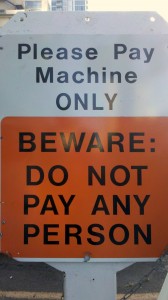Pension funding in the news
Since I’ve written about some pension funding issues in previous postings (example), let me point readers to a couple of news articles. From today’s Wall Street Journal, “Pension Gaps Loom Larger”, about how public and private pension funds are assuming 8 percent return on investment over the coming decades. And today’s New York Times has “The Illusion of Pension Savings”, about Enron-style accounting gimmicks that enable states to look slightly less bankrupt.
In some ways the WSJ article is more interesting. Here in Boston an 18-year-old hired by the MBTA can retire at age 41 and is entitled to an inflation-adjusted pension from age 41 until death at perhaps age 100. So the pension fund managers need to be looking out for about 80 years. The assumptions that they’ve made are that the U.S. needs to grow about as well for the next 80 years as it did during the years 1920-2000 (and the 2000-2010 period needs to be chopped out!) or the fund and therefore the company or state goes bankrupt. Not only does the U.S. need to continue to be doing great, but returns to investors need to continue to be high. The flood of savings from newly wealth Chinese, Brazilians, and Indians, for example, cannot result in competition that reduces the return to capital below what it was in, say, the 1950s. When you think about it, the risk that these guys are comfortable with is rather breathtaking. Without a letter from God promising that the next 80 years will look like the 1920-2000 period, why do we allow corporate managers and politicians bet the future of their organizations?
Full post, including comments